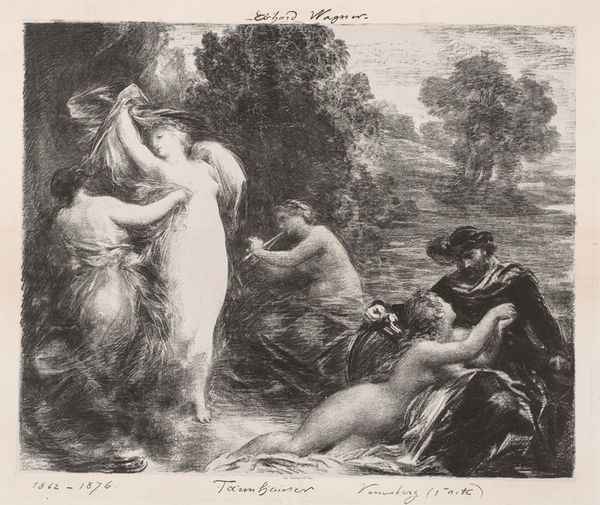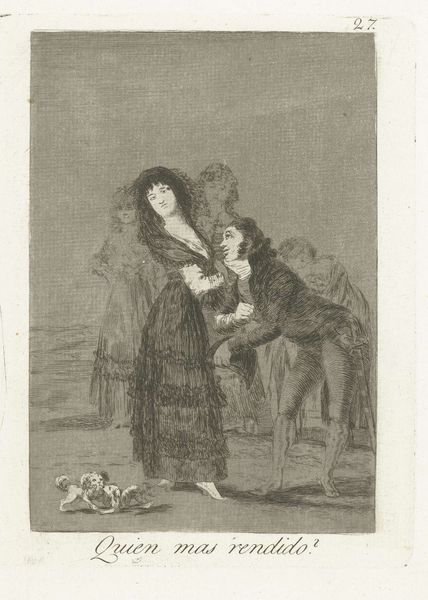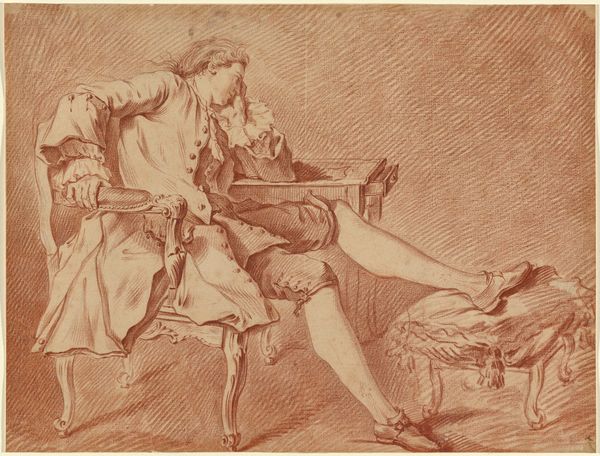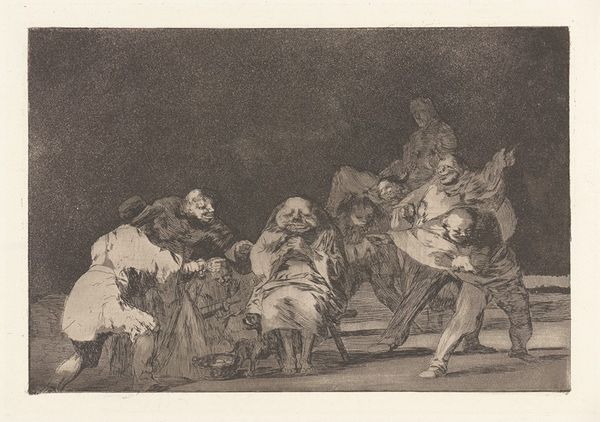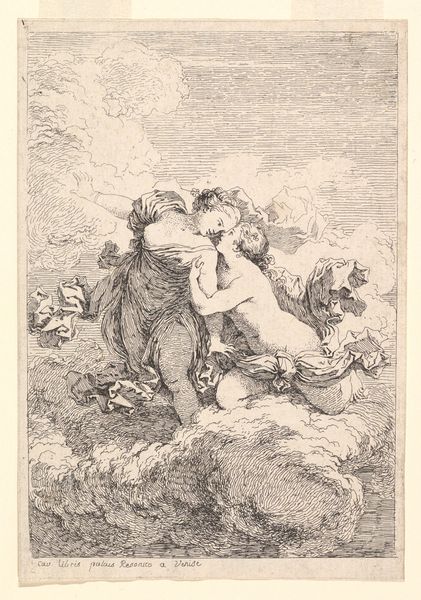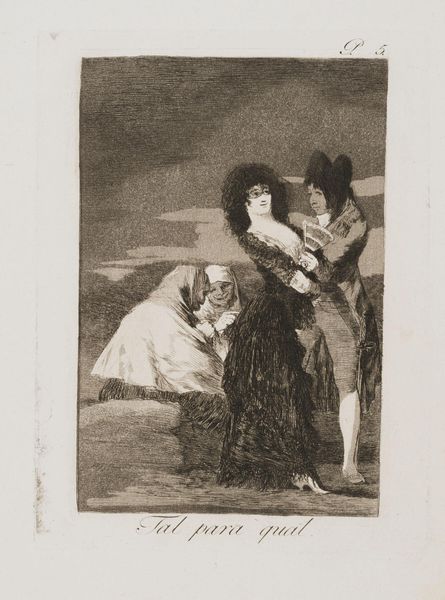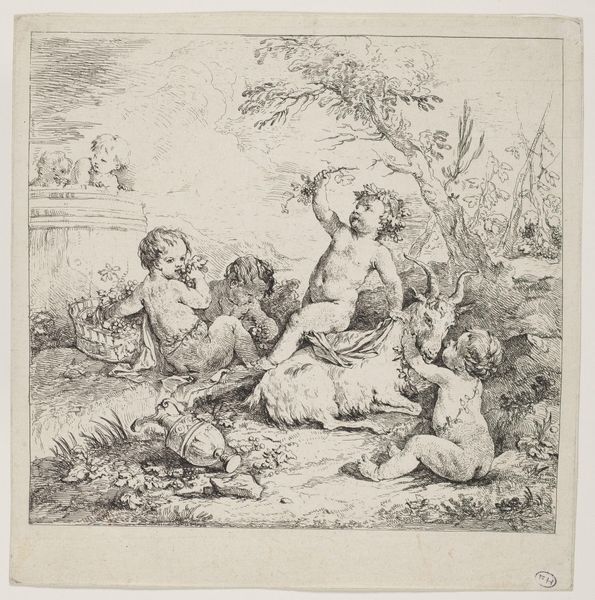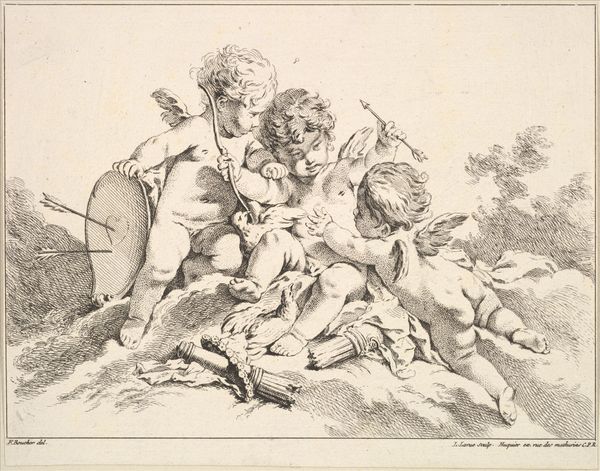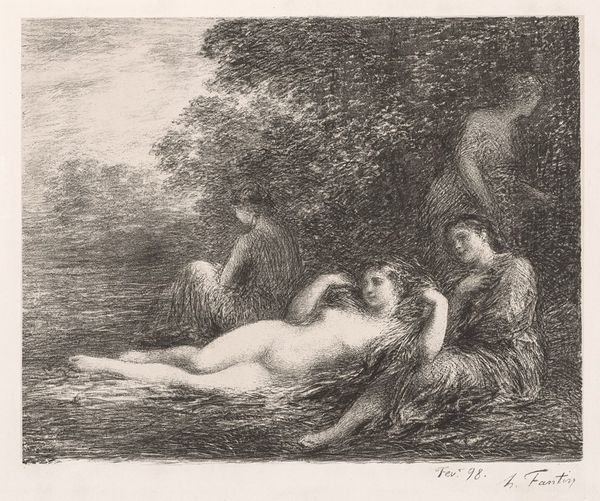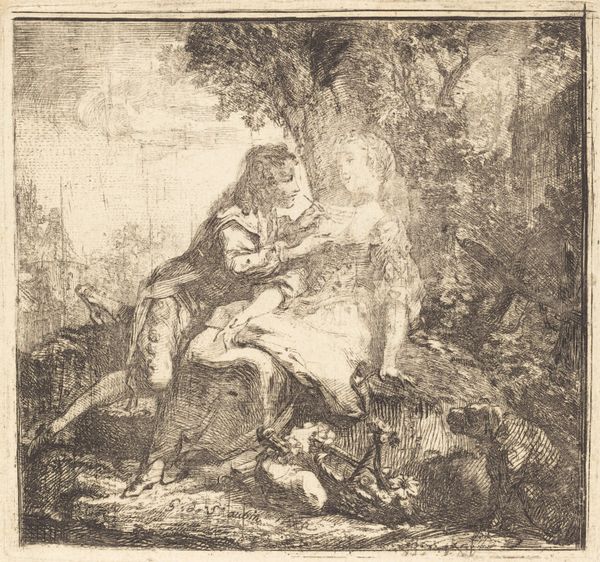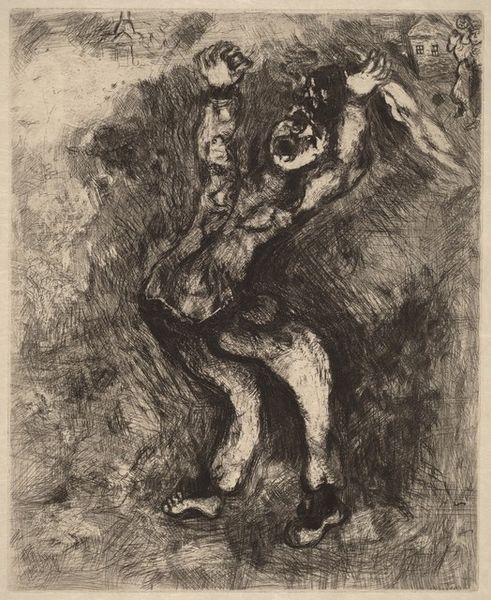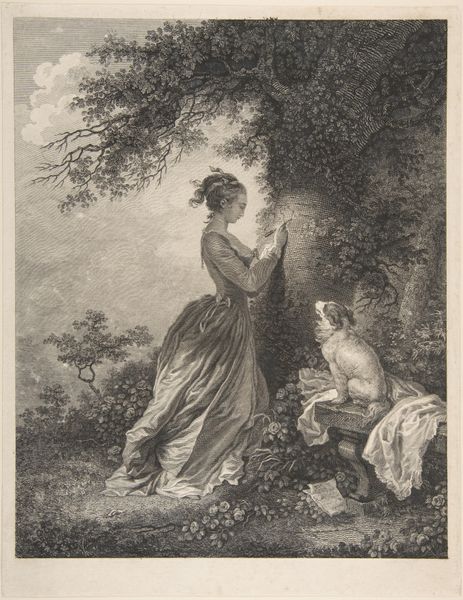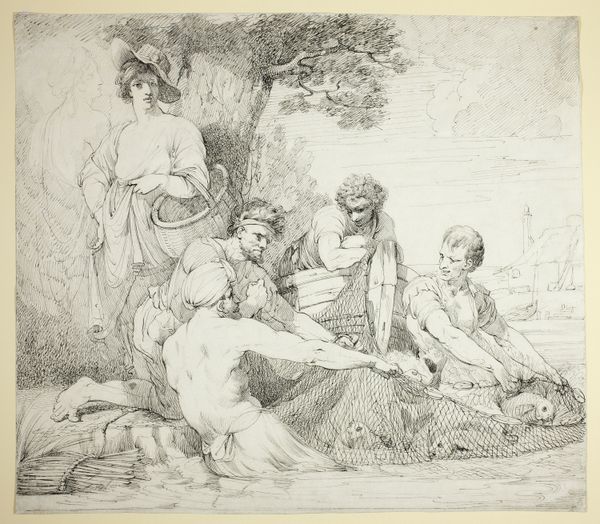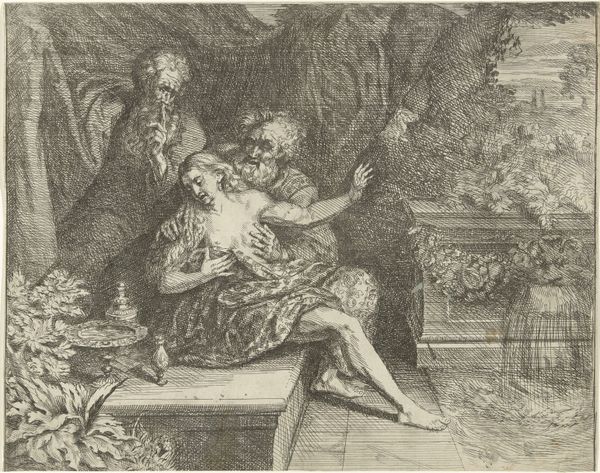
Copyright: Public Domain: Artvee
Editor: Here we have Watteau's *La Surprise* from 1718-1719, an oil painting. The texture of the garments seems so meticulously rendered! What strikes you about the work? Curator: Look at the materiality of the clothing. The silks and velvets practically shimmer, indicating the wealth and status of the figures depicted, don't they? But what kind of labor produced them? And who consumed them? The painting subtly points towards a society built upon the production of luxury goods. Editor: That's a very interesting way of considering it; I was just appreciating the sheen. So you're saying the luxuriousness displayed highlights social and economic structures? Curator: Precisely. And it raises questions: were the artists celebrating the extravagance, or subtly critiquing its dependence on potentially exploited labor? Consider the dog as well, also a symbol of status and wealth achieved. The presence of a dog highlights that even pets require upkeep from a working class that exists in absence here in this art. Editor: That makes me think differently about what's actually being portrayed here; more than just a pleasant encounter in a park. Curator: Exactly. Watteau's masterful use of oil paint deceives you by seducing your eye at first sight; but then, we can start to examine what supported such luxurious artwork and lifestyles through the labor and exploitation involved in Rococo artistry. How did access to these materials—the pigments, the canvases—impact Watteau’s creative choices and the kind of story he decided to represent? Editor: That's fascinating. I hadn't thought about art from the perspective of what went into creating the actual materials and societal inputs; thank you for that insight. Curator: Of course! I find Watteau's choices to highlight those societal divides with rich, luxuriant artworks such an impactful decision.
Comments
No comments
Be the first to comment and join the conversation on the ultimate creative platform.
